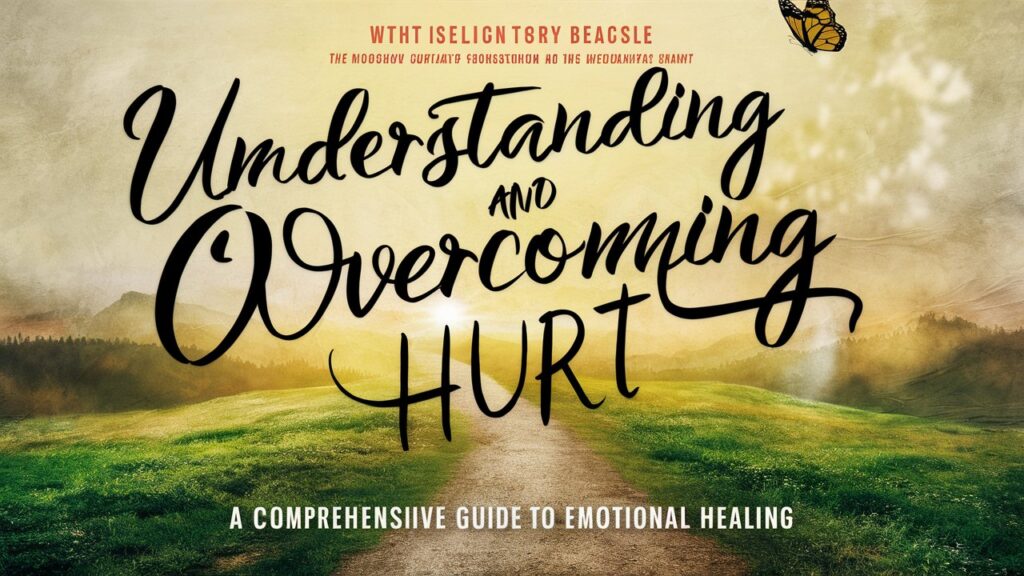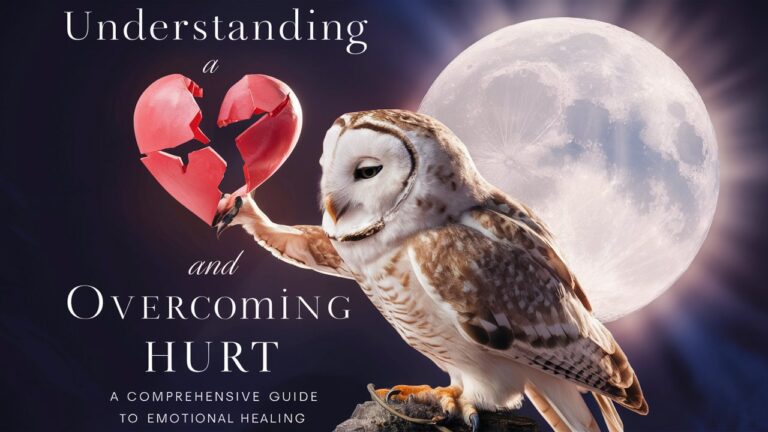Introduction: The Universality of Hurt
Hurt is an inevitable part of the human experience. Whether caused by rejection, betrayal, loss, or failure, emotional pain leaves a profound impact on our mental and physical well-being. Unlike physical injuries, which often heal with visible scars, emotional wounds linger beneath the surface, influencing relationships, self-esteem, and life choices. This article explores the complexities of hurt, offering actionable strategies to navigate and heal from it. By understanding its roots, recognizing its effects, and adopting healthy coping mechanisms, individuals can transform pain into resilience. Let’s delve into the anatomy of hurt and the pathways to recovery.
1. The Nature of Hurt: Emotional vs. Physical Pain
Hurt manifests in two primary forms: emotional and physical. While physical pain arises from bodily harm, emotional pain stems from psychological triggers such as rejection, criticism, or abandonment. Neuroscientific studies reveal that both types activate similar brain regions, such as the anterior cingulate cortex, explaining why heartbreak or grief can feel as visceral as a physical injury. However, emotional pain is often more complex due to its subjective nature. For example, a harsh comment from a loved one might cause deeper suffering than a stranger’s insult, highlighting how personal context amplifies hurt. Understanding this duality helps validate one’s experiences and reduces self-judgment.
2. The Psychological Impact of Unresolved Hurt
Unaddressed hurt can evolve into chronic mental health challenges. Prolonged emotional distress may lead to anxiety, depression, or post-traumatic stress disorder (PTSD). For instance, someone betrayed by a partner might develop trust issues, sabotaging future relationships. Similarly, childhood neglect can shape adult behaviors like people-pleasing or emotional withdrawal. The mind’s tendency to ruminate on painful memories exacerbates these effects, creating cycles of negativity. Recognizing these patterns is the first step toward interrupting them. Therapy, mindfulness practices, and self-reflection can dismantle destructive thought loops and restore emotional equilibrium.
3. Healthy vs. Unhealthy Coping Mechanisms
How we respond to hurt determines its long-term impact. Unhealthy strategies—like substance abuse, emotional suppression, or revenge—offer temporary relief but deepen wounds over time. For example, numbing pain with alcohol might mask sadness initially but often leads to addiction or isolation. Conversely, healthy coping mechanisms prioritize healing. Journaling helps process emotions, exercise releases endorphins to counteract stress, and seeking therapy provides professional guidance. Building a toolkit of constructive responses, such as creative expression or volunteering, redirects focus from pain to purpose, fostering resilience.
4. The Role of Communication in Healing Hurt
Open dialogue is pivotal in resolving interpersonal hurt. Suppressing feelings breeds resentment, while honest conversations—though daunting—create opportunities for understanding. Using “I” statements (e.g., “I felt hurt when…”) reduces defensiveness and invites empathy. Equally important is active listening: allowing the other party to share their perspective without interruption. However, communication isn’t always about reconciliation. Sometimes, setting boundaries or walking away from toxic relationships is necessary for self-preservation. The key is to prioritize emotional safety over forced resolutions.

5. The Journey of Forgiveness: Myths and Realities
Forgiveness is often misunderstood as excusing harmful behavior or reconciling with the offender. In truth, forgiveness is a personal act of releasing anger to reclaim inner peace. It doesn’t require condoning actions or reconnecting with the perpetrator. For example, forgiving a parent for past neglect might involve acknowledging their flaws while focusing on self-healing. This process is nonlinear and may take years, especially for deep wounds like abuse. Self-forgiveness is equally critical; letting go of guilt over past mistakes fosters self-compassion. Therapy or support groups can guide individuals through this nuanced journey.
6. Building Emotional Resilience for Long-Term Healing
Resilience—the ability to adapt to adversity—is cultivated through intentional practices. Mindfulness meditation anchors individuals in the present, reducing anxiety about past hurts. Cognitive-behavioral techniques challenge negative beliefs, such as “I’m unworthy of love,” replacing them with empowering narratives. Surrounding oneself with supportive communities—friends, family, or online groups—provides validation and reduces isolation. Additionally, embracing vulnerability as a strength, rather than a weakness, allows for authentic connections. Over time, these habits rewire the brain to approach pain as a teacher, not a tormentor.
Conclusion: Transforming Hurt into Growth
Hurt, though painful, holds the potential for profound personal growth. By acknowledging pain, adopting healthy coping strategies, and fostering resilience, individuals can emerge stronger and more empathetic. Healing is not about erasing scars but integrating them into a narrative of strength. Whether through therapy, creative outlets, or meaningful relationships, every step toward recovery is a victory. Remember: you are not defined by your wounds but by the courage to heal.
Frequently Asked Questions (FAQs)
Q1: How long does it take to heal from emotional hurt?
Healing timelines vary based on the hurt’s severity, personal resilience, and support systems. While minor upsets may resolve in weeks, deep traumas could take years. Consistency in self-care and professional help accelerates progress.
Q2: Can emotional pain cause physical symptoms?
Yes. Chronic stress from emotional hurt may lead to headaches, fatigue, or digestive issues. This mind-body connection underscores the importance of holistic healing.
Q3: Is forgiveness necessary for moving on?
Forgiveness is a personal choice. While it can liberate individuals from anger, it’s not mandatory. Setting boundaries or focusing on self-care may be more appropriate in cases of abuse.
Q4: How do I support someone dealing with hurt?
Listen without judgment, validate their feelings, and avoid offering unsolicited advice. Encourage them to seek professional help if needed.
Q5: What are signs that hurt is turning into trauma?
Flashbacks, avoidance of triggers, hypervigilance, or emotional numbness may indicate trauma. Consulting a therapist specializing in trauma is crucial.
This guide empowers readers to navigate hurt with compassion and agency, transforming pain into a catalyst for growth.
